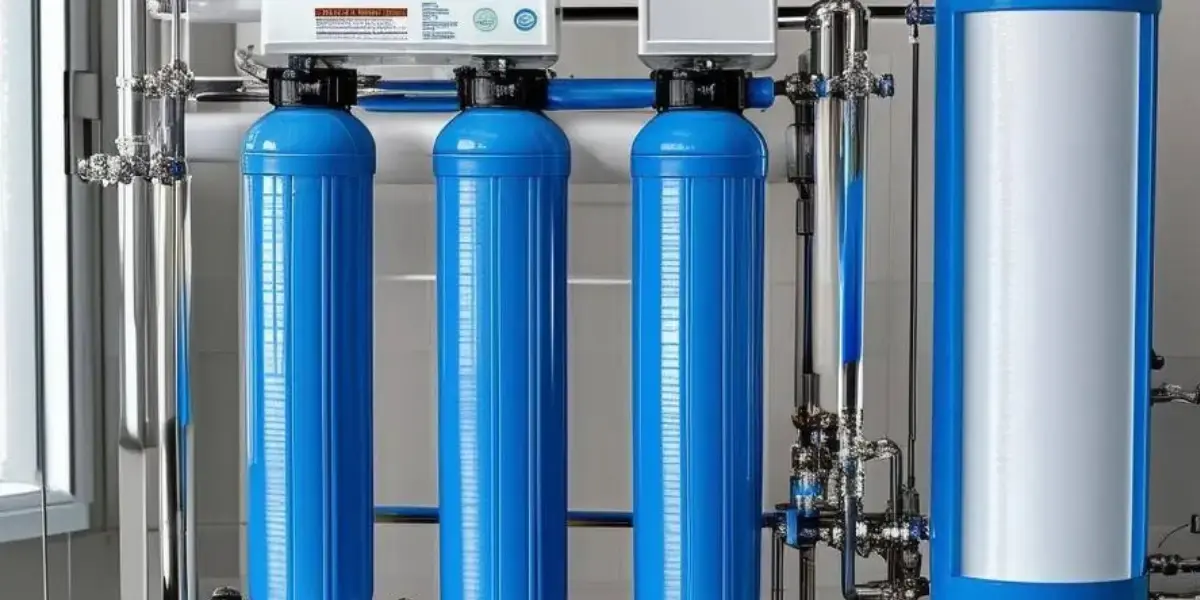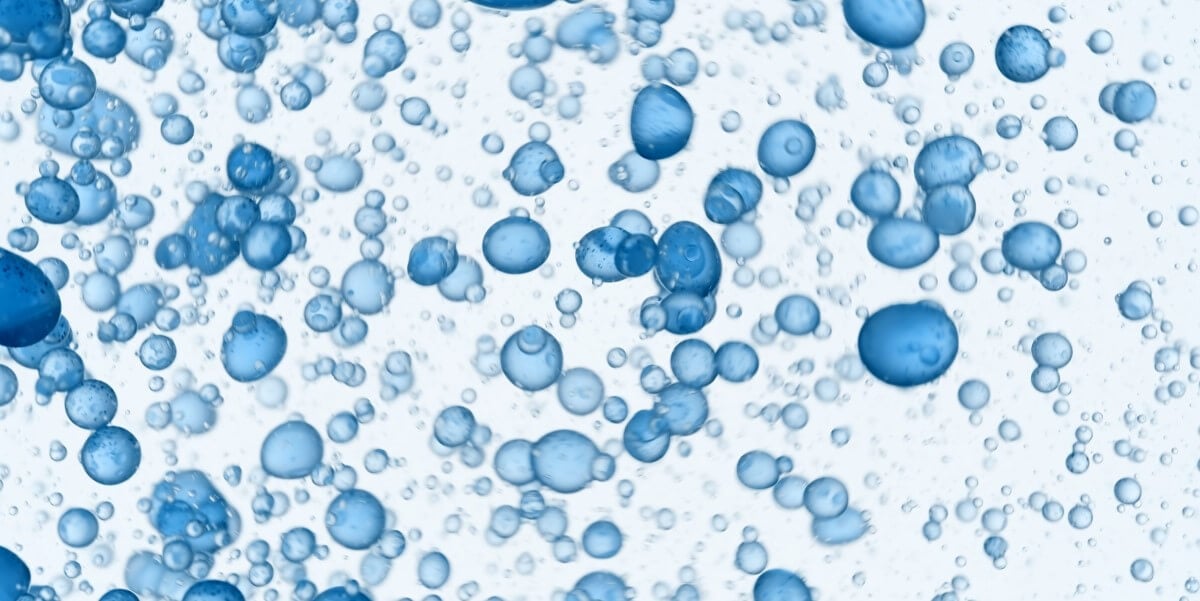How to prevent and control Pseudomonas in water systems
We often talk about poor water hygiene in terms of Legionella and the risk it poses to human health. But it's not the only bacteria that building owners and operators must be concerned with.
This blog post discusses the risk of Pseudomonas in water and how it can be prevented, tested, and treated.
What is Pseudomonas?
Pseudomonas is a common bacteria that can be found in soil and water.
There are over 100 different species, but the one that most often causes infections in humans is Pseudomonas aeruginosa.
Pseudomonas aeruginosa was discovered in 1882 by Carle Gesard, a French chemist, when he discovered its water-soluble pigments that turned blue-green when exposed to ultraviolet light. "Aeruginosa" refers to the blue-green colour of laboratory cultures of the species. When grown in the laboratory on agar plates, it also has a distinctive, grape-like smell.
What are the risks of Pseudomonas in water?
Pseudomonas aeruginosa poses a threat to people with weak immune systems, such as the elderly, very young babies, and the sick, including those with long-term illnesses like cystic fibrosis.
It is one of the more common causes of healthcare-associated infections and is increasingly resistant to many antibiotics. Common infections include pneumonia, urinary tract infections, septicaemia and gastrointestinal infection. In hospitals, the bacteria can contaminate moist or wet reservoirs such as respiratory equipment and indwelling catheters.
There have been several well-known cases of Pseudomonas aeruginosa in hospitals. One of the most notable dates back to 2012, when four babies died following an outbreak of Pseudomonas aeruginosa in two neonatal hospitals in Northern Ireland. That same year at a Bristol neonatal unit, another baby died, and 12 others were given treatment.
Though Pseudomonas rarely affects human health, it can threaten the efficient running of hot and cold water systems. If left untreated, Pseudomonas can pave the way for fouled systems, and once the bacteria has taken hold, it can be hard to rectify.
Stagnant water may give Pseudomonas the perfect conditions to grow and multiply. This can lead to biofilm formation and other problems such as corrosion. The biofilm can form on the pipe and heat exchanger surfaces, causing a reduction in the efficiency of the system. Though not dangerous to humans, the business implications can be significant. There may be financial implications if the system has to be replaced. It can also impact your carbon footprint, as a less efficient system uses more energy.
If Pseudomonas is found in your water system, it's generally a sign that the water quality is not as it should be. Other bacteria tend to cling to it and can even become hidden within it.
How can you prevent Pseudomonas from growing and multiplying?
Preventing Pseudomonas begins with how your water system is designed and installed. Design problems like dead legs and capped pipes can create the ideal stagnant conditions for Pseudomonas to grow. If these are installed, they must be looped out and circulated regularly.
In line with BSRIA guidelines, new water systems must also undergo pre-commissioning cleaning. This ensures the water system is clean from the outset.
Once the water system is in use, routine microbiology and chemistry analyses can be used to check the water is clean and free from harmful bacteria. Pseudomonas thrive in low temperatures, so maintaining a consistent water temperature of 20°C is a good way to discourage contamination. Checking chlorine levels stay within specific parameters, along with regular biocide treatment, also helps to prevent Pseudomonas. These steps are taken very seriously in healthcare settings.
Regular water testing is the best way to ensure water is free from Pseudomonas. A water treatment specialist will undertake a risk assessment to determine how frequently your water should be tested and recommend the best treatment course, depending on the results.
How do you test for Pseudomonas in water?
A water treatment specialist will collect a sample and then take it for testing. At WCS, all our water samples are tested by independent laboratories such as Latis Scientific, a market leading provider of laboratory services.
The testing process is slightly different for Pseudomonas species and Pseudomonas aeruginosa.
Testing for Pseudomonas species
For Pseudomonas species, the water sample is concentrated using a filtration system (if necessary) and added to a selective agar plate containing antibiotics that inhibit the growth of many other bacteria that may be present. It is then added to an incubator where Pseudomonas is able to grow, and if growth is found, then a biochemical test is carried out for confirmation. This test involves adding bacterial material to an “oxidase reagent” where a colour change is observed if positive.
Testing for Pseudomonas aeruginosa
Testing for Pseudomonas aeruginosa follows much the same process, only using a slightly different agar and an additional confirmatory tests to check for a number of factors, including the casein hydrolysis and UV fluorescence. The acceptable level is zero Pseudomonas aeruginosa detected.
All samples are collected and tested within 24 hours.
What are the treatment solutions if Pseudomonas is found?
If Pseudomonas species or Pseudomonas aeruginosa is found, the water treatment specialist will provide treatment recommendations.
One effective method of minimising the growth of Pseudomonas is flushing. Pseudomonas contamination can also be removed from your water system with a suitable disinfectant solution. This can involve downtime during treatment and for retesting afterwards.
Residual levels of Pseudomonas can also be treated continuously through ultraviolet sterilisation.
In some cases, retesting might be recommended.
Summary
Pseudomonas is a common bacteria that can be found in water. Pseudomonas species in water systems can severely impact the system's efficacy, while Pseudomonas aeruginosa can be harmful to human health, especially amongst vulnerable patients in healthcare settings. Efforts to prevent any Pseudomonas contamination are therefore essential and legally required. Pseudomonas aeruginosa is treated very seriously in healthcare.
Regular testing, the frequency determined by a risk assessment carried out by a water treatment specialist, is the best way to identify contamination. Treatment solutions including flushing and dosing are typically recommended if Pseudomonas is found.
If you'd like to learn more about controlling for Pseudomonas, don't hesitate to get in touch with our technical team.
Topics: Water Treatment & Hygiene

Written by Jon Greaves
Jon has progressively worked through operational roles, account management, technical management, and senior management roles over the last 16 years within one of the group companies before moving into the role of Water and Air Managing Director. Jon has experience across multiple sectors of water and air compliance, including district energy networks; data centres; healthcare; food and beverage and facilities management. Jon acted as a corresponding steering committee member on CIBSE CP1 – Heat Networks Code of Practice for the UK released in 2020.





